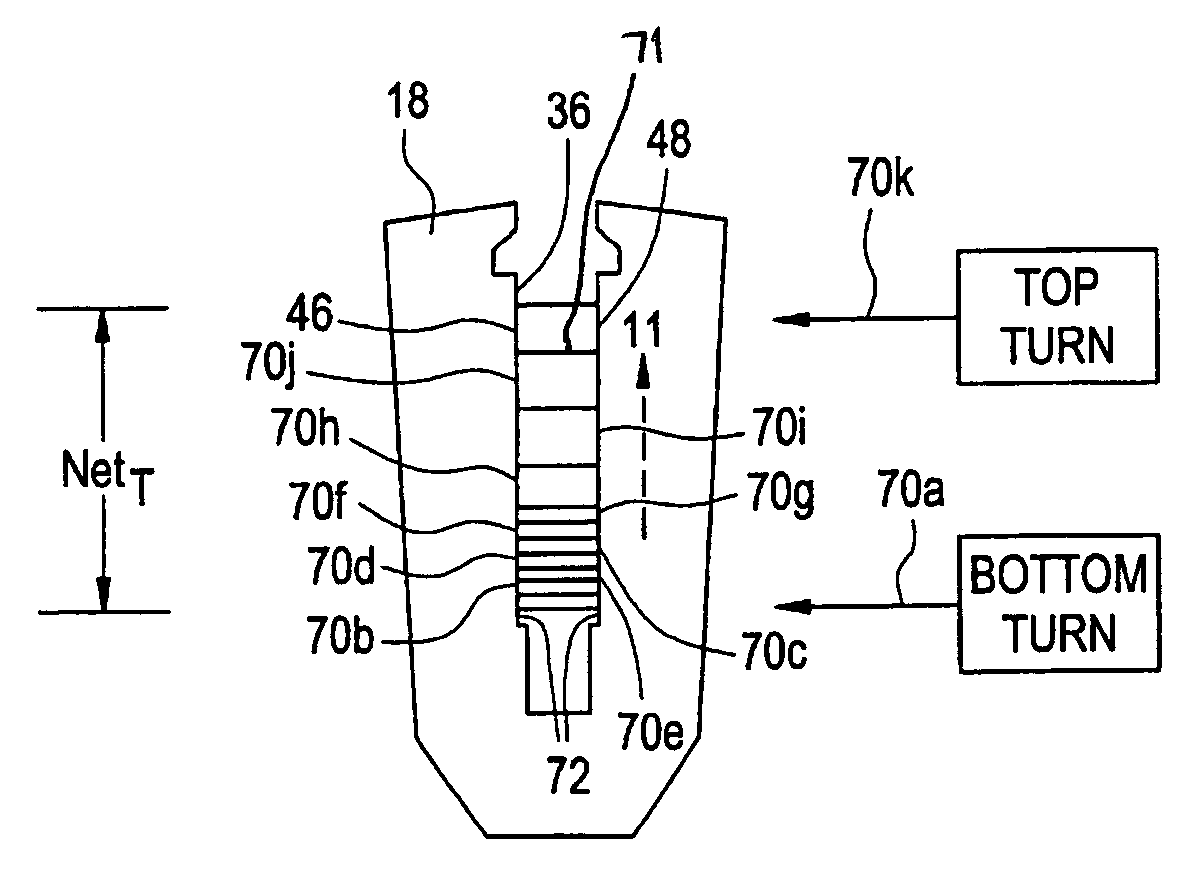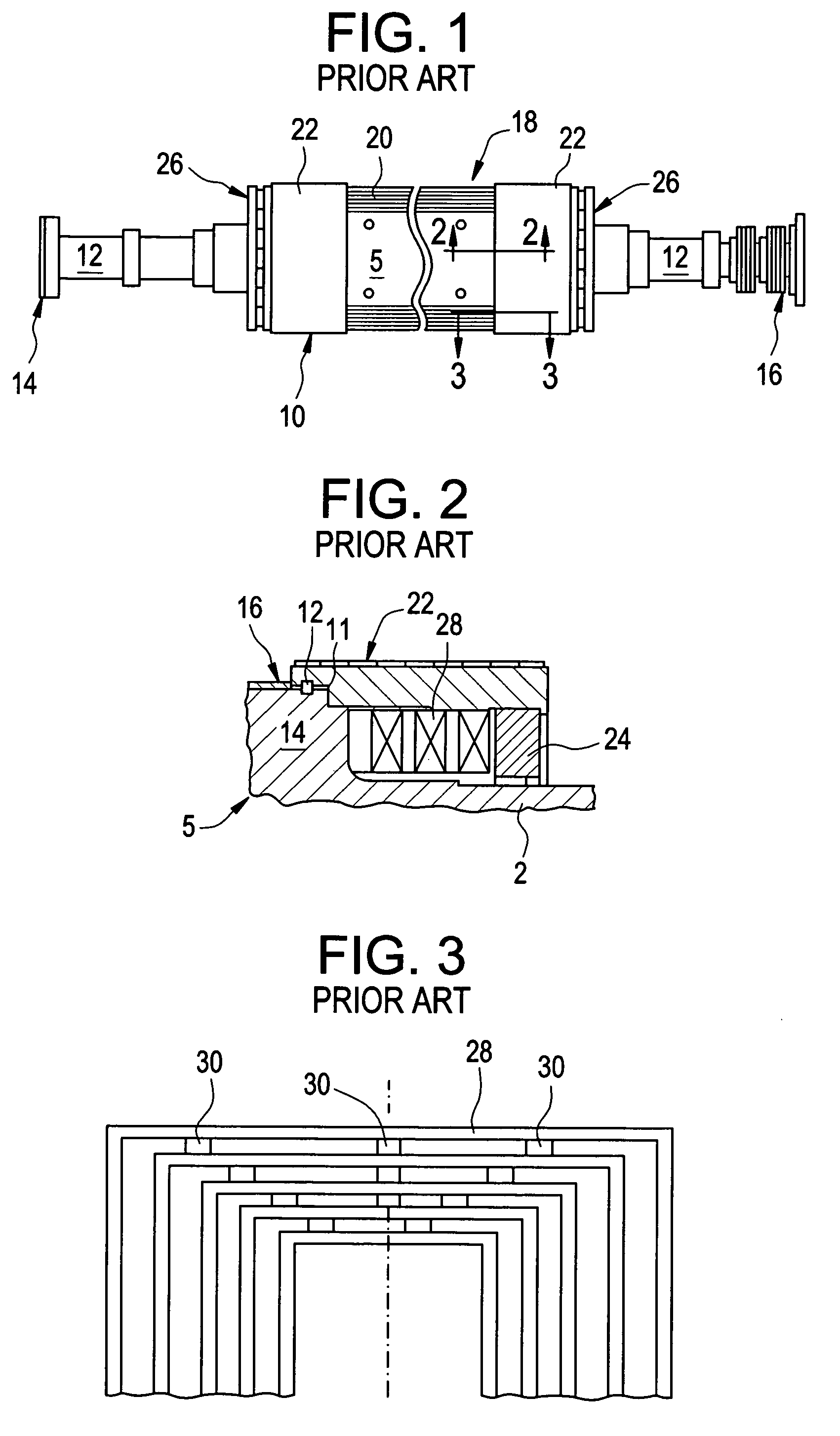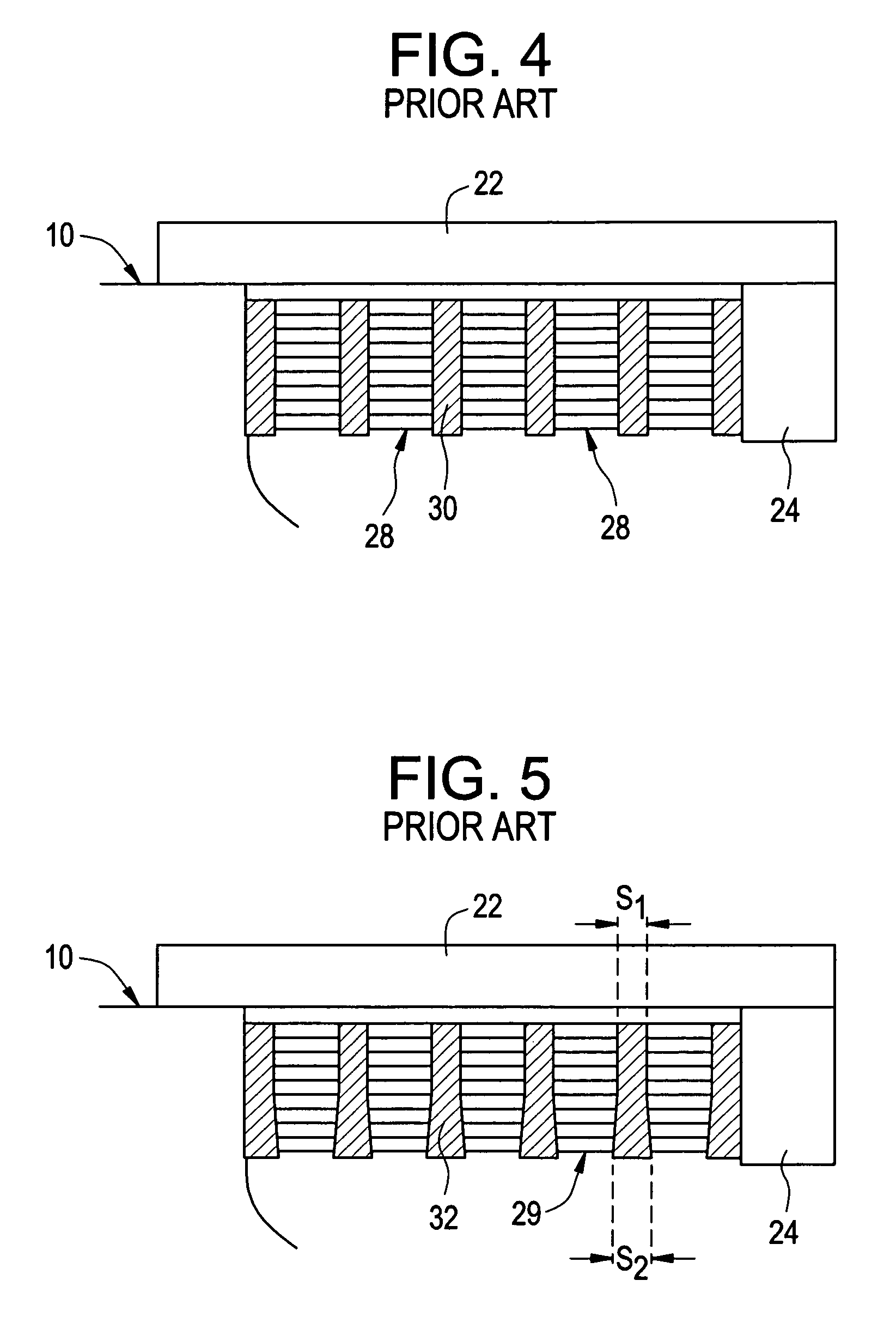Method and apparatus for reducing hot spot temperatures on stacked field windings
a technology hot spot temperature reduction, which is applied in the direction of windings, magnets, magnetic bodies, etc., can solve the problems of inability to reduce the heat dissipation rate of stacked field windings, the limiting factor of increasing power density of radial air cooling ducts machined in by punching operations, and the inability to produce hot spot temperatures
- Summary
- Abstract
- Description
- Claims
- Application Information
AI Technical Summary
Benefits of technology
Problems solved by technology
Method used
Image
Examples
Embodiment Construction
[0021]FIG. 1 illustrates a conventional rotor 10 for a generator (or motor). The rotor has a shaft 12 with a power turbine (or mechanical mode) coupling 14 and supported by bearings (not shown). The rotor shaft 12 also has a collector ring 16 that provides an electrical junction for the rotor field winding.
[0022]The rotor has a large diameter body 18 that holds the coil windings 20. The rotor body has longitudinally oriented slots extending radially outwardly from the center of the rotor 10, and in which the individual turns of the windings 20 are mounted. These slots extend the length of the rotor body, and annular retaining rings 22 cap both ends of the rotor body 18. The retaining rings are supported at one end by the rotor body (see FIG. 2). Adjacent the retaining rings 22 are fans 26 that cool the retaining rings and other rotor components.
[0023]As will be appreciated from FIG. 2, the retaining rings 22 slide over the end of the rotor body 18 and are attached to the rotor body ...
PUM
| Property | Measurement | Unit |
|---|---|---|
| temperature | aaaaa | aaaaa |
| length | aaaaa | aaaaa |
| peak temperatures | aaaaa | aaaaa |
Abstract
Description
Claims
Application Information
 Login to View More
Login to View More - R&D
- Intellectual Property
- Life Sciences
- Materials
- Tech Scout
- Unparalleled Data Quality
- Higher Quality Content
- 60% Fewer Hallucinations
Browse by: Latest US Patents, China's latest patents, Technical Efficacy Thesaurus, Application Domain, Technology Topic, Popular Technical Reports.
© 2025 PatSnap. All rights reserved.Legal|Privacy policy|Modern Slavery Act Transparency Statement|Sitemap|About US| Contact US: help@patsnap.com



